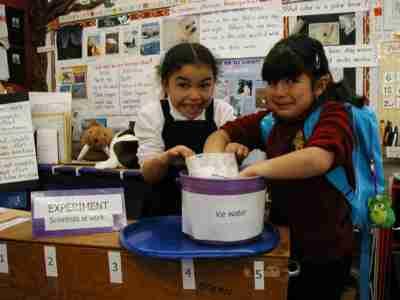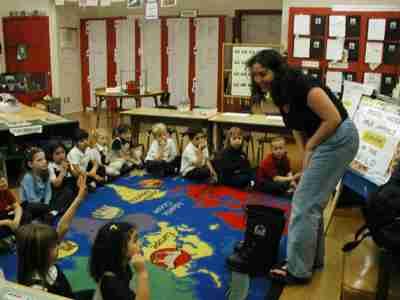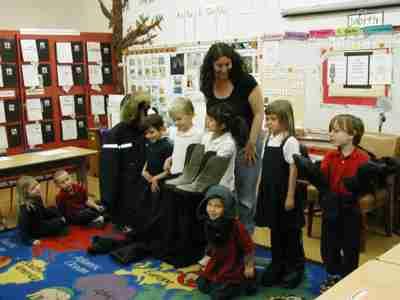16 February, 2002

In preparation for the updcoming fieldwork on Little Diomede, the students have become Arctic scientists. This is our classroom.

These student scientists have been studying about the world and our place within it. We know that human beings are a part of nature and that learning about the many adaptations and special survival strategies that help living things thrive is important for all people. Here are two students parcticipating in an experiment that helped us understand why mammals who live in Arctic environments need animal fat, what we call blubber, to survive.

A discussion about how humans have learned to meet their survival needs in very cold polar environments. We have been studying about some of the very warm clothing that was made and used in the past, and comparing it to what people use today to keep warm and dry in Arctic climates. In the past, the clothing that people wore outside was made from the skins of the animals that lived around them. Humans relied on and used animals for both food and clothing. For example, women made parkas for their families from the hides,or skins, of such animals as reindeer, seals and birds.

Trying on some of the extreme cold weather gear (ECW gear) that the National Science Foundation (NSF) is lending to me while I am out in the Arctic parcticipating in a scientific research project on Little Diomede Island in Alaska.

Learning is such an adventure! Mrs. Gershon and her amazing class of Kindergartners.
Contact the TEA in the field at
.
If you cannot connect through your browser, copy the
TEA's e-mail address in the "To:" line of
your favorite e-mail package.
|
